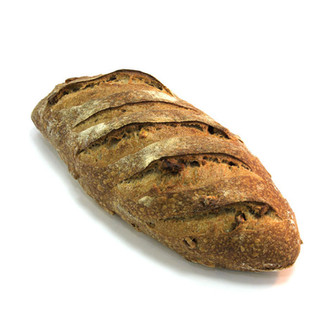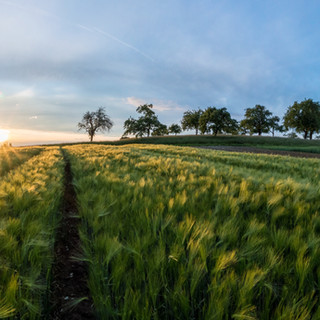Last month I visited Australia for the first time in my life. It was a refreshing and pleasant escape from the mega steam room in Hong Kong. I cherished every single moment running around Sydney, the Blue Mountains and especially the well-packed sand on beautiful Four Mile Beach in Port Douglas. The running was fantastic and I got to see many more corners of all the places I have visited than I would have done just by walking alone. Each and every place was stunning and amazing in its own way. If you made me choose, the World Heritage-listed Daintree Rainforest certainly made an impression on me.
The Most Ancient Tropical Rainforest
Daintree Rainforest is the oldest continually surviving rainforest in the world. Sources vary on the exact age of the rainforest, which range from 110 million to 170 million years, no doubt it is ancient. My husband and I joined a walking tour ran by a family who bought 67 hectares of land freehold in Daintree with the sole purpose of conservation. The site was deservedly listed as World Heritage by UNESCO in 1988. The tour was an educational experience and we only scratched the surface in learning the complex and delicate ecosystem in the rainforest. It was fascinating to learn about the majestic Southern Cassowaries. They are large, colourful, flightless birds of the same family as emus, ostriches and rheas, and clearly the signature species in the Queensland region.
The Majestic Southern Cassowary
Cassowaries are called "keystone species' because of their significance for the continued health and survival of the Daintree Rainforest. Their diet consists mostly of tropical fruits and their digestive tracts can deal with very toxic fruits which are in abundance in the forest. Cassowaries swallow fruits whole and can pass entire seeds (sometimes the size of a golf ball) through with their excrement. Cassowaries have an important role of transporting seeds over long distances across the rainforest and their droppings can improve the chance of successful germination. In fact, more than 30 species would not germinate unless they have passed through a Southern Cassowary's bowels.
The Wisdom of Trees
Daintree Rainforest is a mysterious and beautiful place where you can admire thousand-year old trees and hundred-year old plant species barely reaching waist height. Unlike animals, plants cannot run or walk so they have to use other means to protect themselves from predators, to ensure their offspring germinate, grow and thrive beyond a thousand years. For many plants it is desirable for their seeds to spread over a large area so that they do not compete for water, food and resources with their parents. Spreading out also helps to reduce the risk of the family being wiped out by the same fire or disease in close proximity. Even without legs, plants have adopted very effective strategies to transport their seeds to their destinations: gravity, wind, water, explosion, or even hitching a ride with animals.
Mutualism
Over millennia, trees and plants have evolved and adapted their environment to thrive and multiply. They produce delicious and colourful fruits attractive to animals, birds, insects and other foragers. After enjoying such sweet treats, the animals happily (and unknowingly) return the favour by planting seeds far away from the parents and even get the germination going with their own excrement.
Tree Embryos
Seeds and grains hold the reproductive power of plants. Naturally they are rich in minerals and nutrients essential for germination and growth until they could access water and soil. Seeds, nuts and grains are wonderful, nutrient-dense foods, but some plants are highly protective of their offspring that even the magnificent Cassowary with its almighty digestive tract has to expel the seeds intact because they are so toxic. Similarly, apple seeds and the pits of peaches, apricots and cherries contain a cyanide compound which serve to protect their seeds against predators.
Anti Nutrients
Even without legs to run or claws to fight, plants have developed complex chemicals to protect themselves and their even more defenceless nuts and seeds offspring. The defence mechanism found in nuts, seeds, grains and legumes come in the form of enzyme inhibitors, phytic acid and lectins. These are also called anti nutrients, because they block nutrients from predators.
Phytic acid (or phytates) is a very effective chelator, which means it binds strongly to minerals such as calcium, magnesium, iron and zinc, preventing our bodies from absorbing them.
Lectins are proteins that bind to carbohydrates. Lectins are very tough and indigestible by human body. Lectins can stick to the lining of the small intestine, disrupt absorption by the micro-villi (hair-like lining of the small intestine) and cause nutrient deficiencies.
Enzyme inhibitors are proteins that bind to an enzyme and decrease its activity. Some are useful drugs in treating diseases and metabolic regulation. Some are natural poisons or anti-nutrients found in plants, such as trypsin inhibitors in some legumes and the highly toxic ricin found in castor oil beans.
Bioavailability
Have you ever suffered from the following symptoms? These may be associated with the corresponding mineral deficiencies: Anaemia (iron), muscle cramp (magnesium), skin problems (zinc). Next time when you dig into a bowl of heart-healthy wholegrain cereal, think about the abundant minerals and vitamins held in the food, how much of all this goodness is locked up by anti-nutrients, and how much is left available for your body to digest and absorb.
The Agricultural Revolution
If grains are such a poor choice of food, how did we end up with 90% of the world's calories coming from wheat, rice, maize (corn), yams, potatoes, millet and barley? The answer is the Agricultural Revolution, which significantly increased our food supply and improved food security, freeing up resources to improve our livelihoods other than growing food. All the extra cultivated grains did not provide us a more nutritious diet than our hunter-gatherer ancestors, but they sure did enable our population to grow exponentially. We are not necessarily healthier, but there are many more of us than previously thought possible, can we call this an evolutionary success?
Paleo or Grain-free
At this point, you may expect me to rave about the Palaeolithic diet and bash grains. Paleo diets actually allow nuts and seeds, just that they don't encourage lots of nuts and seeds due to their anti nutrient properties. Personally I am happy to eat grains or legumes if they are well prepared and I know some people may be concerned about skipping whole food group may affect the quality of their nutrition. Oats and quinoa used to be my favourite go-to foods during marathon training. We can certainly explore ways of choosing higher quality grains and learn how to prepare them properly.
The Aboriginal Nut Diet
Humans have been eating grains for hundreds if not thousands of years. Traditional cultures offer numerous ways to unlock nutrients and make them more bioavailable. Aboriginals are known to consume a large number of toxic nuts and seeds. They have over the years developed ways of treating and processing these poisonous seeds extensively to turn them into nutritious edible food.
Ancient Grains
Unless you have celiac disease, gluten sensitivity or wheat allergies, whole-grains can provide important nutrients like fibre, B vitamins, iron, magnesium and even protein. We can choose ancient grains which have been least likely affected by extensive selective breeding over the centuries and the more recent genetic engineering by the agribusiness. Ancient grains are likely to contain less allergens than modern wheat, corn or rice. Examples include spelt, kamut, freekeh, bulgur, farro, millet, barley, teff, oats, quinoa, amaranth, buckwheat (kasha) and chia.
Finally, a couple of suggestions on how to prepare grains.
- Soaking. Use filtered warm water and add an acidic medium such as yoghurt, lemon juice, kefir helps to breakdown antinutrients. Most grains need to be soaked overnight and up to two days, except for brown rice, buckwheat and millet. Rinsing is recommended.
- Souring or Fermenting. During fermentation, wild yeast and lactobacillus help neutralise phytic acid, which make nutrients more bioavailable.
- Sprouting helps to neutralise phytic acid and enzyme inhibitors as well as releasing vitamins, making them easier for our bodies to absorb.
So, what are you thoughts? Would you consider going grain-free, gluten-free or wheat-free? Or maybe you are totally thriving on your bread, rice and noodles. Even if you don't make a single change to your food choice, I hope you find this blog interesting and somewhat educational. I'd love to hear your feedback but please be kind and gentle with your comment.
References and sources of information
Living with Cassowaries Part 1.
https://coopercreek.com.au/living-cassowaries-part-1/
Seed Dispersal
https://treesforlife.org.uk/forest/forest-ecology/seed-dispersal/
Transforming the inedible to the edible: An analysis of the nutritional returns from Aboriginal nut processing in Queensland's Wet Tropics
by Anna Tuechler, Åsa Ferrier and Richard Cosgrove
Native Plants Queensland - Some Dangerous Bush Tucker by Greg Calvert
https://www.sgapqld.org.au/information-and-publications/bush-tucker-articles/257-some-dangerous-bush-tucker
Sapiens: A Brief History of Humankind
by Yuval Noah Harari
Undoctored: Why Health Care Has Failed You and How You Can Become Smarter Than Your Doctor
by William Davis, MD
Eat the Yolks: Discover Paleo, fight food lies, and reclaim your health
by Liz Wolfe, NTP
Practical Paleo: A Customized Approach to Health and a Whole-Foods Lifestyle
by Diane Sanfilippo, BS, NC



























